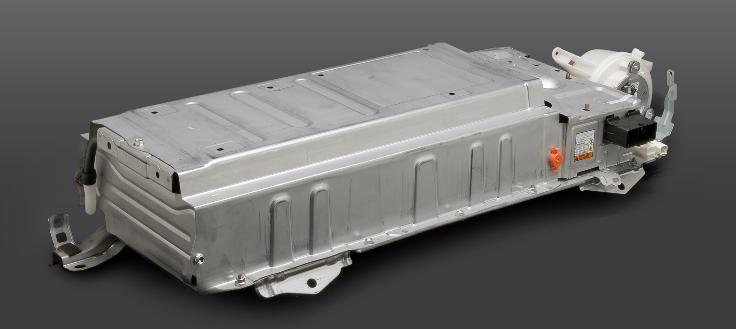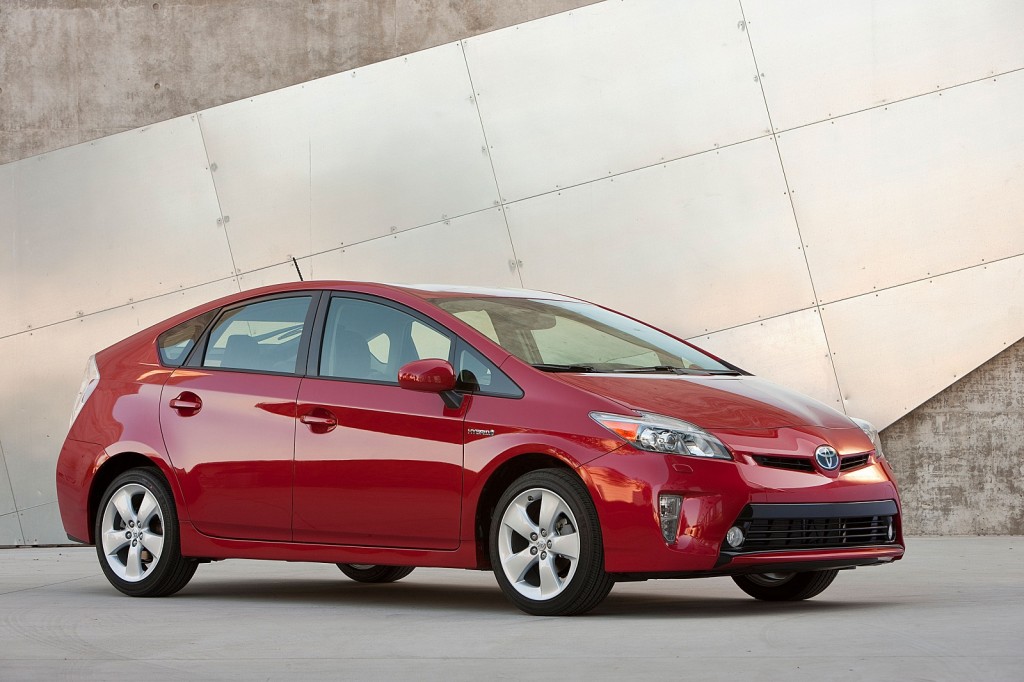The next-generation Toyota Prius hybrid may retain the same shape as its predecessors, but it's likely to be different in several important ways.
With spy shots of 2016 Prius prototypes now emerging, it's time to follow up on a piece we did six months ago.
So, let's look at all the confirmed facts and swirling rumors about the next edition of the world's most popular hybrid car.
For one thing, it will likely make the switch to a lighter lithium-ion battery pack.
For another, it'll be built in the United States, one of its largest markets.
And according to persistent rumors, it may even offer all-wheel drive.
Shape stays the same
The Prius is by now a visual icon, the quintessential hybrid, and instantly recognizable on streets all over the world.
But more than that, it's an extremely aerodynamic shape, with its rounded front, steeply raked windshield, gradually sloping roof, and high, truncated tail.
Toyota will, if anything, retain that shape and work to make it even slipperier to slice through the air using less energy than ever before.
Some styling cues may be found in the NS4 plug-in hybrid and FT-Bh compact hybrid concept cars displayed at auto shows over the last year or two--but you'll still recognize it as a Prius.
Sayonara, flying buttress?
It may well lose the polarizing "flying buttress" console design of the 2010 version, however.

2013 Toyota Prius 5dr HB Three (Natl) Dashboard
While visually striking, that high slash of hard plastic dividing the front passengers made the car less usable, requiring a stretch to reach floor bins underneath it for mobile phones, toll tickets, money, sodas, and all the rest of the stuff we carry when driving.
It's signficant than neither the larger Prius V wagon nor the smaller Prius C subcompact hatchback continues the flying-buttress console design.
Based on the use of a dashboard in the development cars that's very similar to that of a Lexus CT 200h, we're betting the buttress bites the dust.
Lighter lithium-ion battery
Since the very first Toyota Prius arrived at dealers in Japan in 1997, the Prius has used nickel-metal-hydride cells in its high-voltage battery pack.
The chemistry is durable, well-known, and at this point, Toyota can probably build it for less than any other maker due to its volume.

2010 Toyota Prius high-voltage battery pack
The current Prius, launched for the 2010 model year, was meant to have a lithium-ion pack.
But in January 2010, Koie Saga, a senior managing director for drivetrain research, told journalists that Toyota had bet on the wrong lithium chemistry--so it fell back on tried-and-true nickel-metal hydride cells.
Still, the inexorable trend in battery packs for hybrid and plug-in electric vehicles is toward lithium-ion cells, which hold almost twice the energy per weight that NiMH cells do.
Toyota now offers two cars with lithium-ion packs: its Prius Plug-In Hybrid, and a version of what U.S. buyers know as the Prius V wagon, which can be ordered with a small third-row seat in Europe and Asia.
Made in America
Another facet of the 2010 Prius that never materialized was a plan to build it in the U.S., in a Mississippi plant that had originally been targeted for the Highlander crossover utlity vehicle.

2013 Toyota Prius liftback
In 2008, with gasoline prices soaring, Toyota changed its mind and said it would build the Prius there instead. Then the recession led the company to halt all work on the site of the new plant, in Blue Spring, Mississippi.
In June 2010, to compensate for capacity lost when Toyota shut down its Fremont, California, joint-venture plant with GM (now the site of Tesla Model S assembly), the company decided instead to build its high-volume Corolla sedan there.
Last year, finally, Toyota confirmed that it would build the next Prius in the U.S. It hasn't revealed a site for Prius assembly yet, but the news will likely come out within the next 12 months or so, to give it time to tool up a new assembly line.
Meanwhile, though, Toyota must find suppliers in North America that can provide the various specialized components of a Prius: high-voltage battery packs, power electronics, and electric traction motors and planetary gear sets.
All-wheel drive?
Toyota has plenty of experience with all-wheel drive hybrids; it's been offering them in the Highlander Hybrid crossover for several years.
That system uses a separate electric motor on the rear axle to add supplemental rear-wheel drive, powered by the battery pack, if the front wheels begin to slip.
Whether such a system would be added to the more urban Prius is debatable, but with Ford having killed off its Escape Hybrid last year, does Toyota see a market niche?
We suspect that while the base Prius may not get have all-wheel drive, it could offered either on an upscale model or, even more likely, on the next Prius V wagon.
Better gas mileage
Every generation of Prius has boosted its overall combined fuel economy rating.
The 2000-2003 model was EPA-rated at 41 mpg, the 2004-2009 hatchback at 46 mpg, and the current model (2010-present) crossed the divide to average a whopping 50 mpg.
While we'd like to see 60 mpg in the next Prius, we'd bet it's more like 55 mpg combined--still a 10-percent improvement--meaning perhaps 50 mpg achievable in the real world.
So with cost efficiencies from domestic production, more modern conveniences, a better interior, and higher gas mileage ... what's not to like?
If past form holds, Toyota will unveil the new 2015 Prius at next January's 2014 Detroit Auto Show--or one year later, as a 2016 model, in January 2015.
We can't wait, but we'll have to.
_______________________________________________________
Follow GreenCarReports on Facebook, Twitter, Instagram and Google+.













